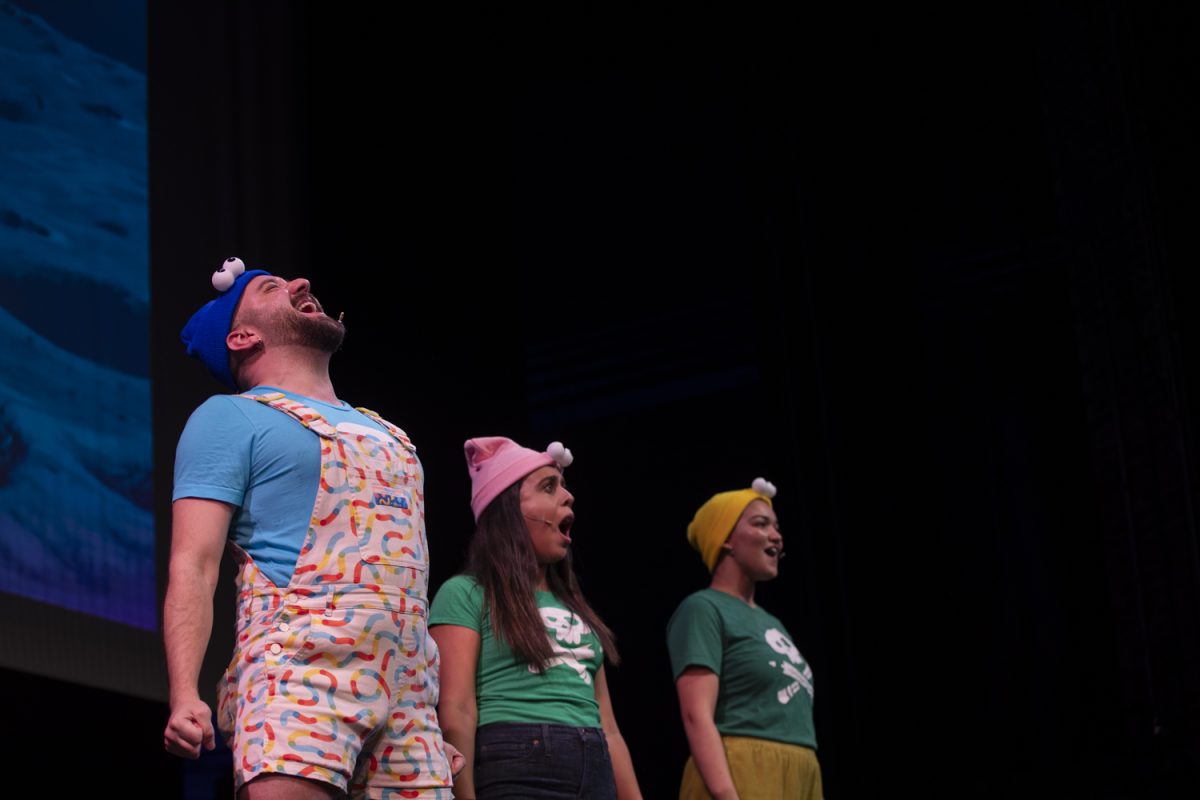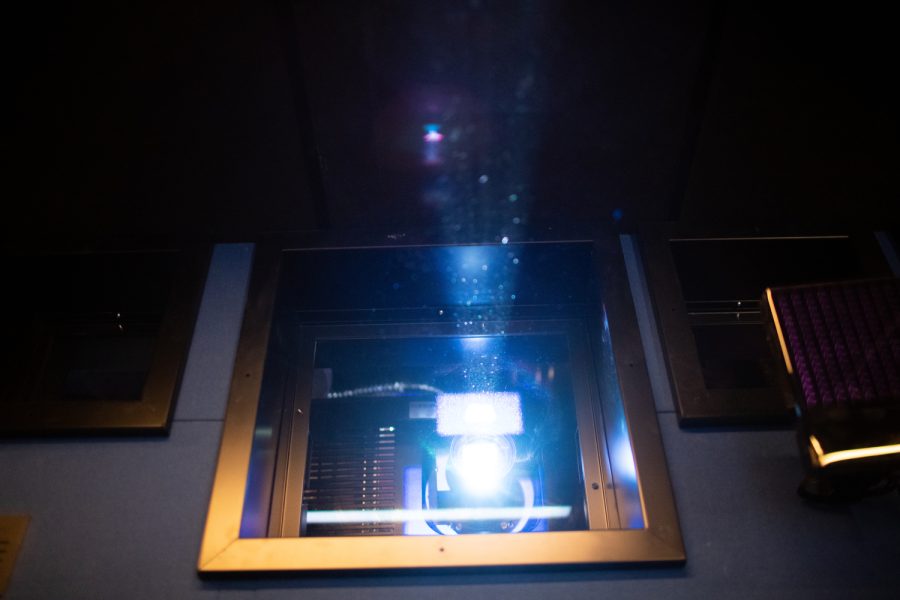Late into the evening weeks before the University of Iowa’s Dance Gala, dancers clad in spandex and sweats rehearse in a studio. Bodies stretch, turn, move, and work together. Musical beats envelope the room, props are deliberately placed, and dancers push the boundaries of movement exploration.
"If there is a theme [for this year’s Dance Gala, it’s about innovation and collaboration," said George De La Peña, the head of the UI Dance Department. "Finding newer and newer ways to use movement as a form of art, beauty, and not necessarily expression."
Fifty undergraduate and graduate students from the Dance Department will collaborate with choreography by special guests, including Hubbard Street 2’s Clebio Oliveira, other professional choreographers, and UI faculty. A piece by nationally acclaimed choreographer Trisha Brown is also featured in this year’s performances.
The JACK Quartet, which will return to Iowa City with new music to accompany the dancers, will play during the Oct. 30 show.
Dance Gala will open at 8 p.m. today in North Hall’s Space/Place. Shows will continue through Nov. 5, with Thursday through Saturday shows at 8 p.m. and Sunday performances at 2 p.m. Admission is $20 for nonstudents, $5 for UI students with valid IDs and youth 17 and younger, and $15 for seniors. Tickets are available at the Hancher Box Office.
This year, Dance Gala comprises six original pieces.
One highlight for the dancers and audiences is a reconstruction of Brown’s signature work Set and Reset/Reset, directed by M.F.A. student Melinda Myers. Brown is an extraordinary figure in the dance and art world with a postmodern emphasis. She collaborated with Robert Rauschenberg, a visual artist, and Laurie Anderson for the music.
Other works include Tongues in Trees, by faculty member Alan Sener, The fantastic escape of a little buffalo, by Oliveira, Catch, by faculty choreographer Charlotte Adams, Sue–os, by faculty choreographer Deanna Carter, and the première of a new work by faculty member Eloy Barragán.
"Fundamentally, all of them are brand-new pieces born this year," De La Peña said.
Choreography involves more than just movement; props, costumes, and music play significant roles in any piece of work.
Dancers in Oliveira’s The fantastic escape of a little buffalo incorporate a giant, mesmerizing red tarp throughout the dance.
In addition to props, costume design also contributes to the visual appeal.
"All of the costumes for Dance Gala are created from scratch specifically for us," said Tyler Nemmers, a dancer in the Brown piece. "Everything is specific toward our bodies."
Set and Reset/Reset takes Brown’s essential ideas of movement combined with new materials and improvisational techniques created by the dancers overseen by Myers.
Members of the Dance Department said the piece is fundamentally a practice in reconceiving movement language, detaching from modern aesthetics and finding brand-new interests in shape, architecture, and movement.
Myers, a second-year UI graduate student who danced with Brown for four years, is working on her own choreography. She approached the department head last year knowing this piece could benefit the dancers and the department.
"The most rewarding thing is working with these dancers and this particular process," Myers said. "The process is learning one base phrase, about five minutes long, and then there are improv components that the dancers use to create the actual composition."
The dancers take one phrase of material and, with a few exceptions, have the opportunity to use their intuition to reconstruct it. They splice it, change directions, or partner with it. Myers serves as an outside eye, directing what works under this improvisational structure.
"Usually when you restage works, you look at the video or have someone reteach it to you, and it’s more or less the original movement," Nemmers said. "But we got the opportunity to learn the base phrase and actually improve and choreograph our own piece."
Myers believes the most exciting aspect of this work is that for the dancers, it’s about their experience, about them being present and interacting in that moment.
"It’s about movement and interaction, constantly resetting your relationship to the material," she said.
Nemmers said the feel of a professional production, two weekends full of performances, working with guest artists and professionals, and custom-made costumes are the best part of his experience in Dance Gala.
"You can take technique class every day and work on it, but there is a part of dance and performance that you can’t get in a class," Nemmers said. "You improve on a grander scale."






